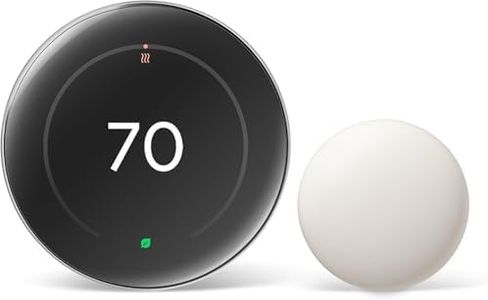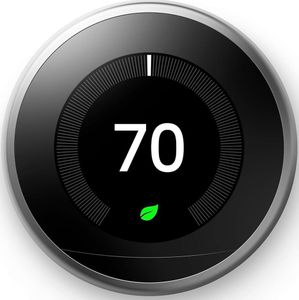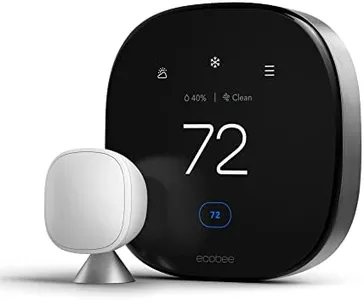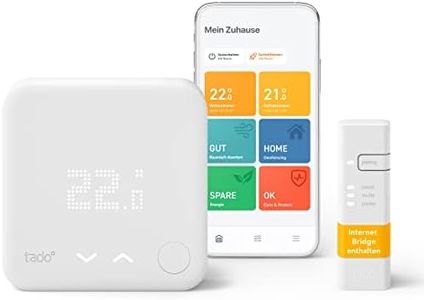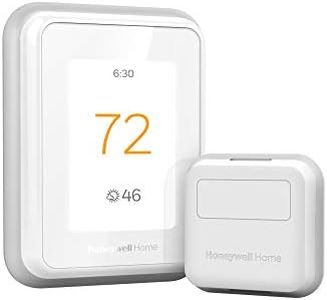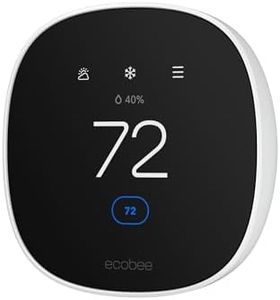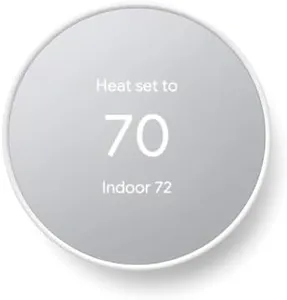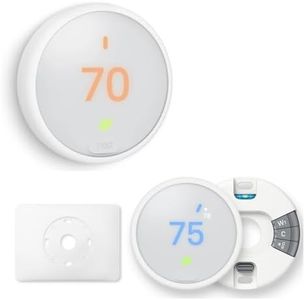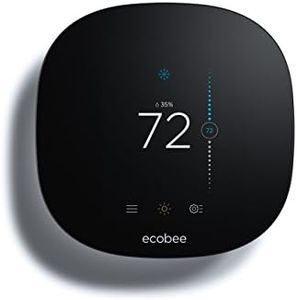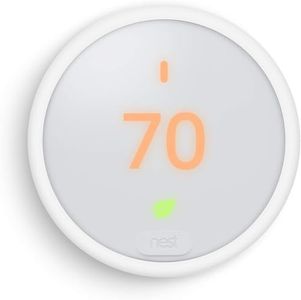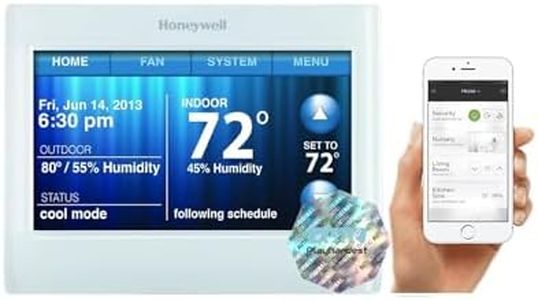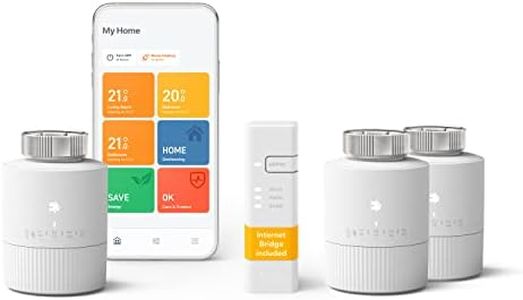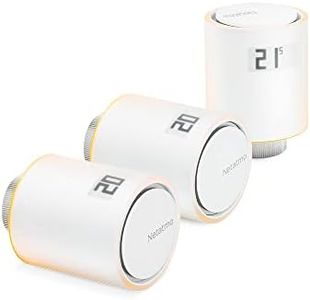We Use CookiesWe use cookies to enhance the security, performance,
functionality and for analytical and promotional activities. By continuing to browse this site you
are agreeing to our privacy policy
10 Best Home Thermostats
From leading brands and best sellers available on the web.Buying Guide for the Best Home Thermostats
Choosing the best home thermostat is all about matching your household's needs with the features that will give you the most comfort, convenience, and energy savings. The right thermostat can help you maintain an ideal temperature throughout your home and control heating or cooling more efficiently. Before you pick one, think about how you use heating and cooling in your home, whether you want advanced smart features, and the kind of heating and cooling systems you already have.Compatibility with HVAC SystemsCompatibility means whether the thermostat works with the heating and cooling system you have at home. Some homes use simple heating or cooling, while others may have complex setups like heat pumps or multi-stage systems. It's important because a thermostat that's incompatible won't control your equipment properly. Most thermostats will specify what types of systems they support. To pick the right one, first determine what type of furnace, AC, or heat pump you have, and make sure the thermostat you consider clearly lists compatibility with your setup.
ProgrammabilityProgrammability refers to the ability to set schedules for temperature changes so the thermostat automatically adjusts throughout the day. This is important because it helps you save energy by not heating or cooling when nobody is home. There are basic programmable models that let you set one or more schedules for the week, as well as more advanced ones that can handle different schedules for each day. If your daily routine is predictable, a simpler programmable model is fine; if your schedule shifts regularly, look for a thermostat with more flexible scheduling options.
Smart Features and Wi-Fi ConnectivitySmart features enable your thermostat to connect to Wi-Fi, a mobile app, or smart home systems, allowing you to control the temperature from your phone or using voice assistants. This is important for added convenience, remote control, and sometimes even learning your preferences to automatically optimize comfort and energy use. These features range from simple remote control to geofencing, learning algorithms, and integration with other smart devices. If you travel often, want remote control, or already have a smart home, prioritize these features. If you prefer simplicity, basic models are sufficient.
Ease of Installation and UseEase of installation and use refers to how easy it is to set up and operate the thermostat. Some units are designed for DIY installation, with clear instructions and user-friendly interfaces, while others may require professional installation. Clear displays, responsive buttons, and logical menus make everyday use more pleasant. If you are comfortable with basic electrical work, a DIY-friendly option is practical; if not, choose a model meant for professional install. Think about who in your household will use it, and make sure the interface is clear and simple for everyone.
Energy Reports and Usage MonitoringSome thermostats offer energy usage reports or monitoring features that show you how much heating or cooling you're using over time. This is important for identifying patterns, seeing where you can save, and tracking improvements. These features can be simple, such as monthly usage summaries, or more detailed with daily breakdowns and suggestions for saving energy. If you want greater control over energy use or are interested in eco-friendly living, look for models that provide easy-to-understand reports and actionable feedback.
Design and DisplayThe design and display refer to the thermostat’s look and the way it presents information—whether through a touchscreen, physical buttons, backlighting, or a particular size and color. This is important for blending with your home decor and making interaction easy and comfortable. Displays can range from minimal and basic to high-resolution and full-color. If aesthetics and visibility are important to you, pick a model with a display and finish that matches your space and can be easily read in all light conditions.
